Original URL: https://www.theregister.com/2014/03/21/wearable_tech_show/
Oculus Rift? Tchah, try 'Oculus Thrift' ... You bet your vrAse we tested these bargain VR specs
That and more trendy wearable tech in London
Posted in Personal Tech, 21st March 2014 07:01 GMT
Pics If you thought dressing smartly had something to do with not wearing jeans, then the "smart" clobber at the Wearable Technology Show in London this month wasn't for you.
If you think it’s about having as many ARM processors attached to your body as possible, well, then now we're talking. Cameras that you can pin to your lapel that take 2,000 pictures a day, motion trackers, 3D viewers, Google Glass-like devices. The technology to assimilate the world around you abounded.
Yet the most impressive device at the show contained no electronics. The vrAse is a case for a smartphone that turns the mobe into a virtual-reality headset. Slot the phone in, slide down a clip to keep it in place and strap the ski-mask-style device to your head, and you are immersed.
The raw idea dates back to Victorian diableries; an image for each eye with decent lenses gives a convincing 3D effect. What makes it so special is that it is so immersive.
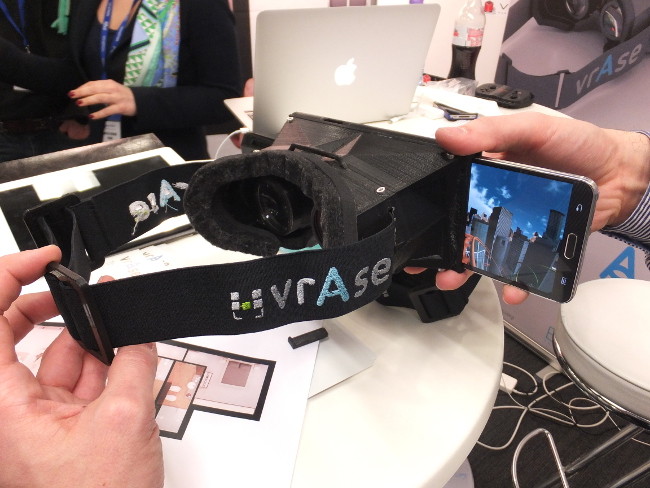
The vrAse prototype weighs less than the production model, which will be around 150g
The image feels IMAX huge and head motion tracking using the accelerometer in the phone allows you to look around very naturally.
Of course, VR headsets have been around for a long time, the industry flagship being the Oculus Rift, but that’s dedicated hardware, still only targeted at developers, and costs $350. The vrAse will be under $100 (£60) when it ships in April.
It’s not the first device like this. The German Durvois Dive is already shipping but the vrAse will take slightly bigger phones - over 5” - opening the way for higher resolutions. The best source of content is 3D movies, as you can’t touch the screen for 3D games when they are in the headset, but vrAse did demo a game in which you piloted a spaceship by tilting your head. It makes you look very strange when your are playing it - but you're on your own holodeck, so who cares?
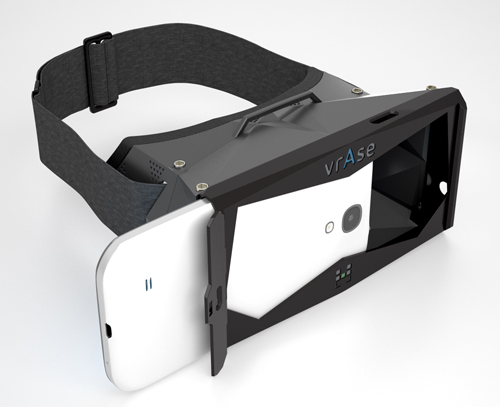
Another look at the vrAse ... smartphone strapped to your face
At the opposite end of the geek spectrum was Xensr, a sports tracker. It’s a device which knows where it is to within 3mm, and can track movements in 3D space, sampling at 400Hz. They have been used in groups on different parts of an American football quarterback’s arm to measure throwing forces.
The device is heavily ruggedised – strong enough to be attached to a tennis racquet – and water proof. There are two versions, one with GPS and the other which expects to use your phone’s GPS. It’s expected to cost $199 for the cheaper version and $249 with GPS. The first units will ship to developers in a couple of weeks with consumer devices – and hopefully a host of applications at the end of the year.
Xsenr is aimed at individual athletes, but for teams Statsports was showing its team GPS. This is a little like the Xensr but sold in batches to teams, including 16 of the 20 Premiership football teams, being used to locate the players on the field. Their software then allows coaches to monitor exactly how hard individuals are training.
Noooo, not the light! Anything but that!
Of course all this outdoor stuff is dangerous. Sunfriend is a device which helps you make sure you get the right amount of sunlight, or at least UV, making the balance between vitamin D deficiency and skin cancer. It looks like a watch but just has a UV sensor.
LEDs show how much UV it has been exposed to and when they all light up it’s time to slap on the sun block or go back to the keyboard. The Sunfriend will cost $49.99 when it ships in April.
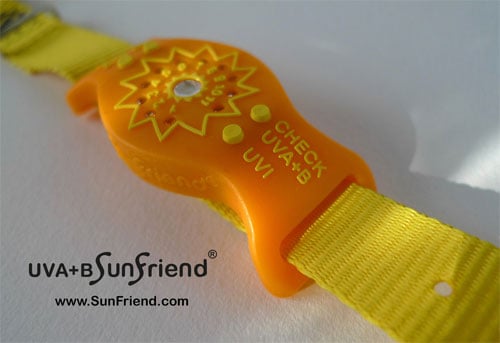
Ultraviolet: Counts your radiation exposure, so you don't have to
Although sunlight is nothing like as dangerous as darkness if you are a cyclist, ex-Marine Simon Weatherall, fresh from his Dragon’s Den appearance, was touting Glofaster, a jacket with electroluminescent strips. These connect to a Bluetooth gizmo which in turn connects to your phone and can be made to flash with different bio-feedback mechanisms. As a personal trainer, Wetherall gives the example of the strips being off until you reach a target heart-rate, then on when the target range is reached and flashing when it is exceeded.
Some of the nicer devices announced at the show include jewellery. Kiroco's pendants and bracelets contain an NFC chip. When you get a message to your phone using the Kiroco messaging system you then tap the jewellery against the phone to read the message.
For the really price conscious there are silicone rubber bracelets, but the jewellery starts with a silver plated disc on a leather bracelet at £16, goes up through silver lockets at £100, and as far as £125 for enamel pendants. Kiroco will be making the tags, Android software and messaging platform available to other jewellers - who will, no doubt, look to make much pricier objects.
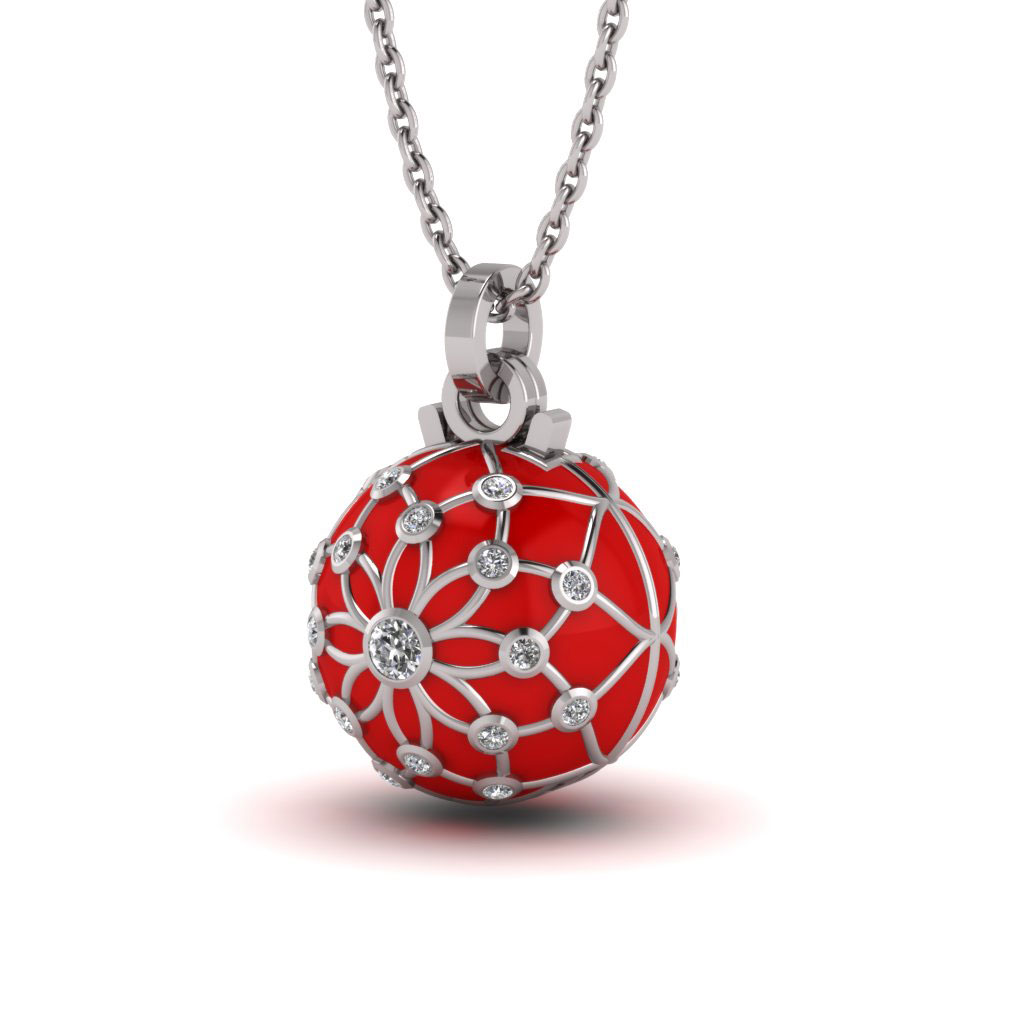
Crystal: Maybe you could use this as an EMV device?
British company Lyte announced its range of video cameras built into glasses. They have been shipping a 720p device for a while at £99.99 but have now announced a 1080p version. This either takes stills or videos and records to a micro-SD card built into the arms of the frame. Future models might have some connectivity but for the moment you’ll have to just take the card out.
The frames are designed to take prescription lenses as the company says there is more demand for that than for plain lenses. It has been surprised at the uses the glasses have been put to, including hairdressers making instructional videos. But, best of all, you can use them to post videos of friends when they make a spectacle of themselves.
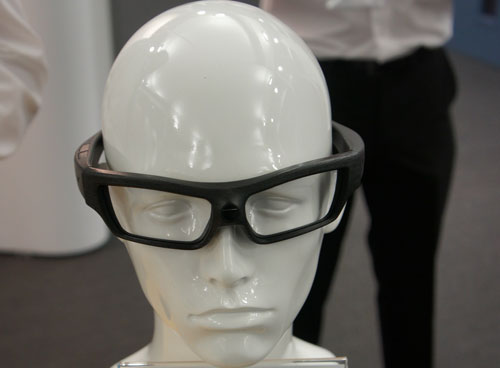
Spy glasses: Record what you're seeing
There was a real buzz to the event, and while Mobile World Congress in Barcelona had a lot of big companies saying that fitness gadgets and wearable computers are the next big thing, the London show felt a lot more down to Earth, with companies that had a much closer relationship to their customers. ®